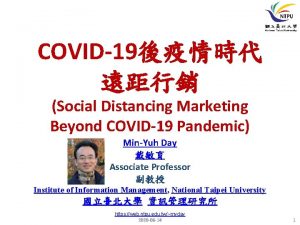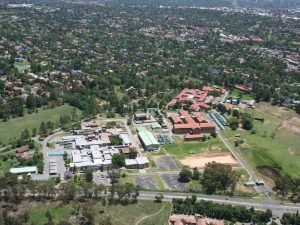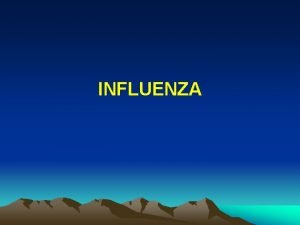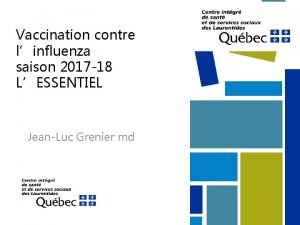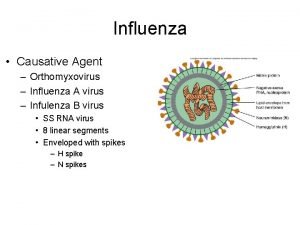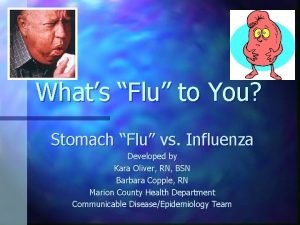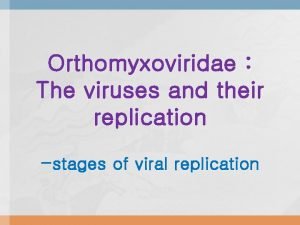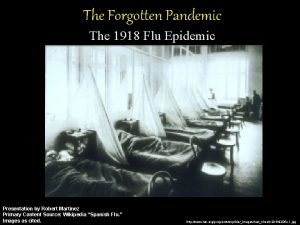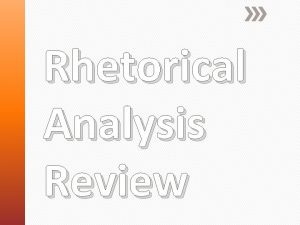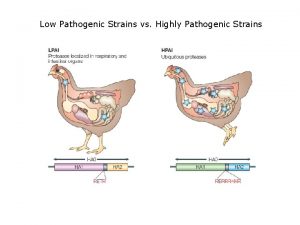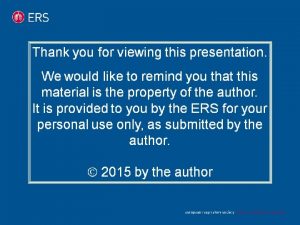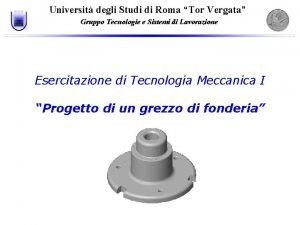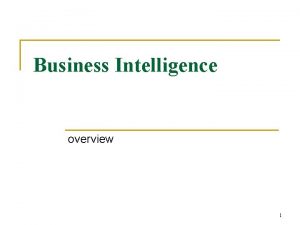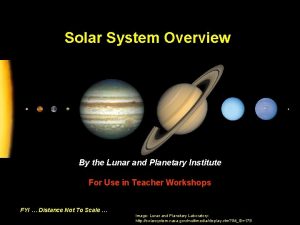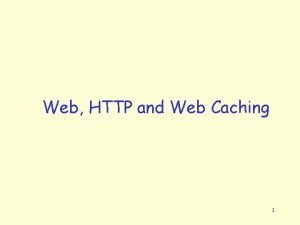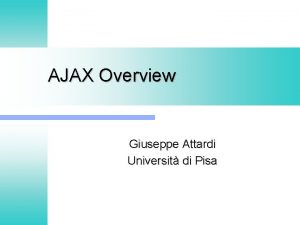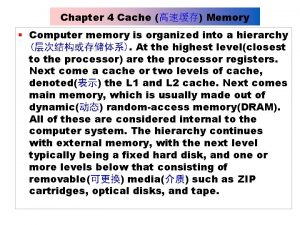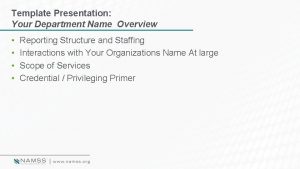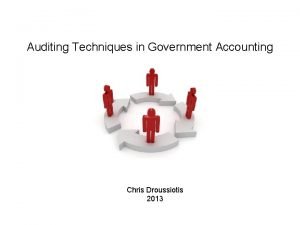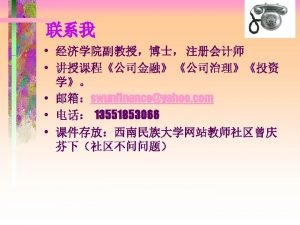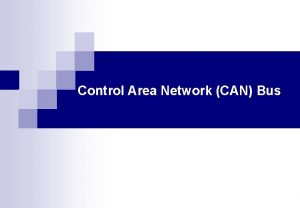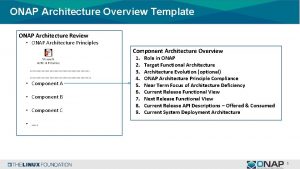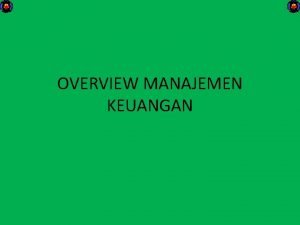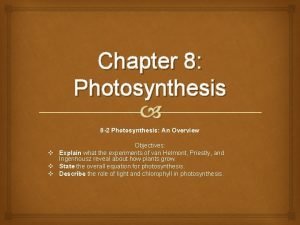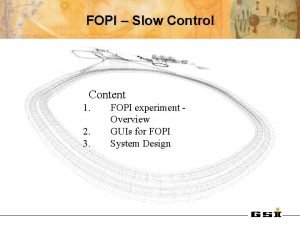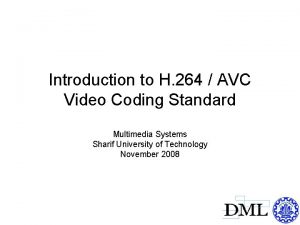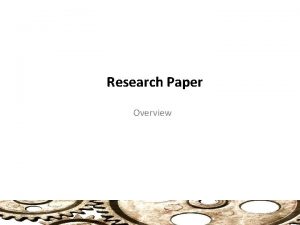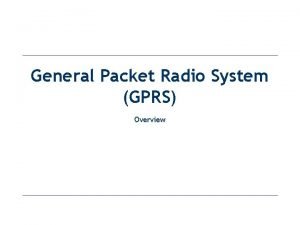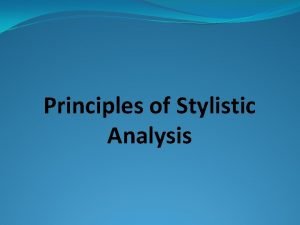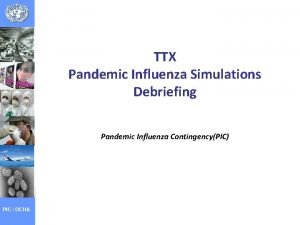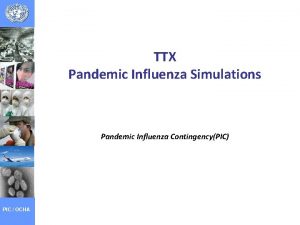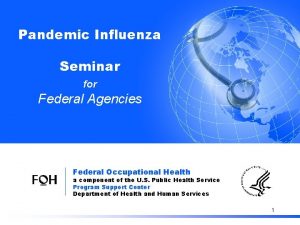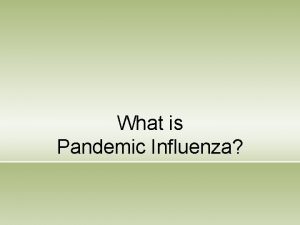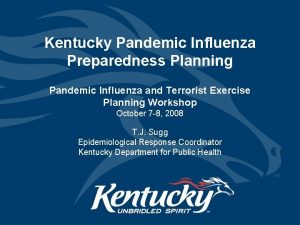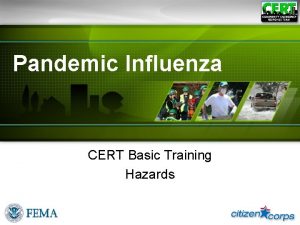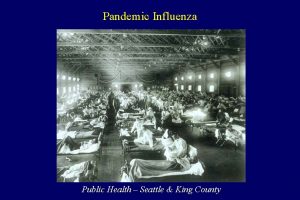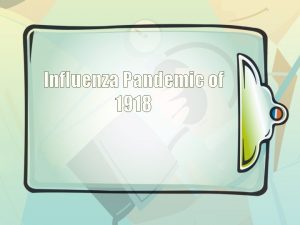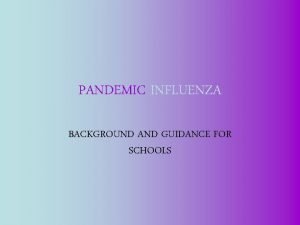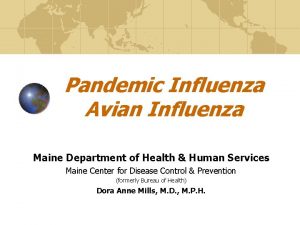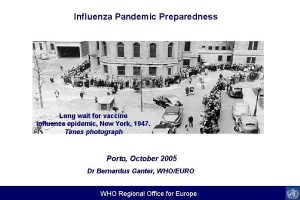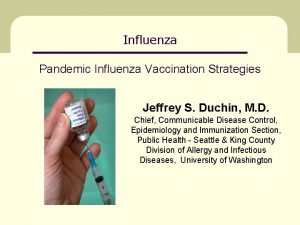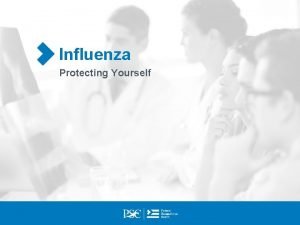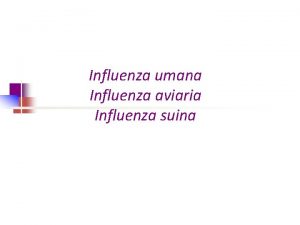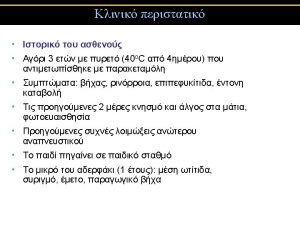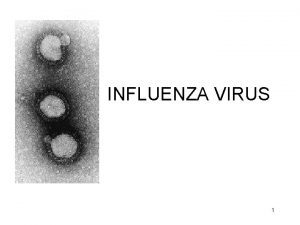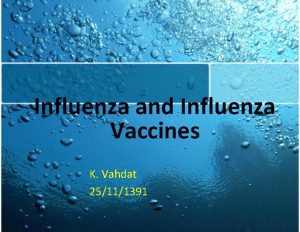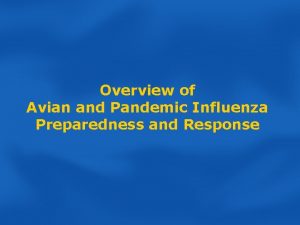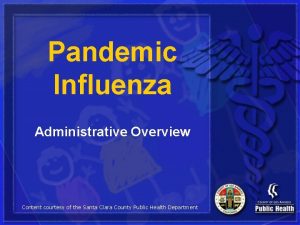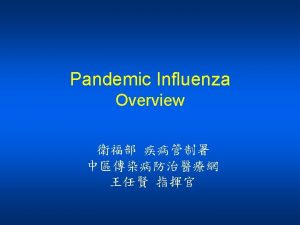Pandemic Influenza Overview Outline What is influenza What












































- Slides: 44

Pandemic Influenza Overview

Outline • What is influenza? • What is an influenza pandemic? • History of influenza pandemics • Control measures

Influenza • Respiratory infection • Transmission: contact with respiratory secretions from an infected person who is coughing and sneezing • Incubation period: 1 to 5 days from exposure to onset of symptoms • Communicability: Maximum 1 -2 days before to 4 -5 days after onset of symptoms • Timing: Peak usually occurs December through March in North America

Influenza Symptoms • Rapid onset of: – Fever – Chills – Body aches – Sore throat – Non-productive cough – Runny nose – Headache

Influenza is a serious illness • Annual deaths: 36, 000* • Hospitalizations: >200, 000* * Average annual estimates during the 1990’s • Who is at greatest risk for serious complications? – – – persons 65 and older persons with chronic diseases infants pregnant women nursing home residents

Influenza Types • Type A – Epidemics and pandemics – Animals and humans – All ages • Type B – Milder epidemics – Humans only – Primarily affects children

Influenza Virus Composition Type of nuclear material Neuraminidase Hemagglutinin A/Beijing/32/92 (H 3 N 2) Virus type Geographic origin Strain number Year of Isolation Virus subtype

Influenza Antigenic Changes Structure of hemagglutinin (H) and neuraminidase (N) periodically change: • Drift: Minor change, same subtype – In 1997, A/Wuhan/359/95 (H 3 N 2) virus was dominant – A/Sydney/5/97 (H 3 N 2) appeared in late 1997 and became the dominant virus in 1998 • Shift: Major change, new subtype – H 2 N 2 circulated in 1957 -67 – H 3 N 2 appeared in 1968 and replaced H 2 N 2 – Pandemic potential

Timeline of Emergence of Influenza A Viruses in Humans Avian Influenza Russian Influenza Asian Influenza Spanish Influenza H 1 1918 H 9 H 5 H 7 H 5 H 1 H 3 H 2 Hong Kong Influenza 1957 1968 1977 1997 2003 1998/9

Pandemic influenza: definition • Global outbreak with: – Novel virus, all or most susceptible – Transmissible from person to person – Wide geographic spread

Impact of Past Influenza Pandemics/Antigenic Shifts Pandemic, or Antigenic Shift Excess Mortality Populations Affected 1918 -19 (A/H 1 N 1) 1957 -58 (A/H 2 N 2) 1968 -69 (A/H 3 N 2) 1977 -78 (A/H 1 N 1) 500, 000 Persons <65 years 70, 000 Infants, elderly 36, 000 Infants, elderly 8, 300 Young (persons <20)

Pandemic influenza: 2 nd waves • 1957: second wave began 3 months after peak of the first wave • 1968: second wave began 12 months after peak of the first wave

Next pandemic: impact Attack rate ranging from 15% to 35%: • Deaths: • Hospitalizations: Source: Meltzer et al. EID 1999; 5: 659 -71 89, 000 - 207, 000 314, 000 - 733, 000

Estimated hospitalizations due to influenza pandemic 95 th percentile Mean 5 th percentile Source: Meltzer et al. EID 1999; 5: 659 -71

Estimated deaths due to influenza pandemic 95 th percentile Mean 5 th percentile Source: Meltzer et al. EID 1999; 5: 659 -71

The 1918 Influenza Pandemic

America’s Forgotten Pandemic by Alfred Crosby “The social and medical importance of the 1918 -1919 influenza pandemic cannot be overemphasized. It is generally believed that about half of the 2 billion people living on earth in 1918 became infected. At least 20 million people died. In the Unites states, 20 million flu cases were counted and about half a million people died. It is impossible to imagine the social misery and dislocation implicit in these dry statistics. ”

America’s deaths from influenza were greater than the number of U. S. servicemen killed in any war Thousands Civil War WWI 1918 -19 Influenza WWII Korean War Vietnam War

Spanish Influenza • Slowed to a trickle the delivery of American troops on the Western front. • 43, 000 deaths in US armed forces. • Slow down and eventual failure of the last German offensive (spring and summer 1918) attributed to influenza.




Infectious Disease Mortality, United States--20 th Century Armstrong, et al. JAMA 1999; 281: 61 -66.



Worldwide Spread in 6 Months Spread of H 2 N 2 Influenza in 1957 “Asian Flu” Feb-Mar 1957 Apr-May 1957 Jun-Jul-Aug 1957 69, 800 deaths (U. S. )

“Asian Flu” Timeline February 1957 – Outbreak in Guizhou Province, China April-May 1957 – Worldwide alert – Vaccine production begins October 1957 – Peak epidemic, follows school openings December 1957 – 34 million vaccine doses delivered – Much vaccine unused January-February 1958 – Second wave (mostly elderly)




Close calls: avian influenza transmitted to humans • 1997: H 5 N 1 in Hong Kong 18 hospitalizations and 6 deaths • 1999: H 9 N 2 in Hong Kong 2 hospitalizations • 2003: » H 5 N 1 in China 2 hospitalizations, 1 death » H 7 N 7 in the Netherlands 80 cases, 1 death (eye infections, some resp. symptoms)

Avian Influenza Poultry Outbreaks, Asia, 2003 -04

Avian Influenza Poultry Outbreaks, Asia, 2003 -04 • Historically unprecedented scale of outbreak in poultry • Human cases reported from Vietnam and Thailand (as of 1/21/05: 52 cases; 39 deaths) • No sustained person-to-person transmission identified • Duration of the outbreak creates potential for genetic change that could result in person-toperson transmission

“The pandemic clock is ticking, we just don’t know what time it is” E. Marcuse

Influenza Control: vaccine – Cornerstone of prevention – Annual production cycle ensures availability by late summer/early summer

Vaccine Development Jan Feb Mar Apr May Jun Jul Aug Sep Oct Nov Dec WHO/CDC) surveillance select strains prepare reassortants standardize antigen WHO/CDC/FDA FDA assign potency review/license formulate/test/package vaccinate FDA manufacturers clinic

Pandemic Vaccine • Annual vaccine is trivalent (3 strains), pandemic vaccine will be monovalent. • Production using current technologies would likely take 4 -5 months may not be available before 1 st pandemic wave • There will be vaccine shortages initially • 2 doses may be necessary to ensure immunity

Influenza control: antiviral medications • Uses – Prophylaxis – Treatment • Issues – Limited supply – Need for prioritization (among risk groups and prophylaxis versus treatment) – Unlikely to markedly affect course of pandemic

Influenza control: infection control • influenza isolation precautions* – Private room or with other influenza patient – Negative air pressure room, or placed with other suspected influenza cases in area of hospital with independent air supply – Masks for HCW entering room – Standard droplet precautions (hand washing, gloves, gown and eye protection) * 1994 Guidelines for Prevention of Nosocomial Pneumonia

Infection control, cont’d • Feasibility of these measures in a pandemic setting is questionable, priorities should include: – Droplet transmission precautions (use of masks and hygiene) – Cohorting of influenza-infected patients

Influenza control: other control measures • Education to encourage prompt selfdiagnosis • Public health information (risks, risk avoidance, advice on universal hygiene behavior) • Hand hygiene • Face masks for symptomatic persons • School closures (? ) • Deferring travel to involved areas

Influenza control: quarantine • Challenges – short incubation period for influenza – a large proportion of infections are asymptomatic – clinical illness from influenza infection is non specific • Not used during annual epidemics • Could potentially slow onset of a pandemic before sustained person-to-person transmission has been established

Medical care during an influenza pandemic • Surge capacity of the hospital system is limited. • Challenges: – Magnitude and duration – Staff shortages – Limited ability to call in external resources

Pandemic Flu Today Despite. . . – Expanded global and national surveillance – Better healthcare, medicines, diagnostics – Greater vaccine manufacturing capacity New risks: – – – Increased global travel and commerce Greater population density More elderly and immunosuppressed More daycare and nursing homes Bioterrorism
 Pandemic tabletop exercise template
Pandemic tabletop exercise template Mathalicious pandemic answer key
Mathalicious pandemic answer key Covid 19 pandemic summary
Covid 19 pandemic summary Global pandemic preparedness
Global pandemic preparedness Interepidemic period
Interepidemic period Influenza
Influenza Influenza vaccine dosage chart 2019-2020
Influenza vaccine dosage chart 2019-2020 Causative agent of diseases
Causative agent of diseases Stomach flu vs influenza
Stomach flu vs influenza Influenza virus replication
Influenza virus replication Influenza ww1
Influenza ww1 The great influenza rhetorical analysis essay
The great influenza rhetorical analysis essay Is influenza a airborne disease
Is influenza a airborne disease Low pathogenic avian influenza
Low pathogenic avian influenza Albert osterhaus
Albert osterhaus Rimantidina
Rimantidina Modulo termico materozza
Modulo termico materozza Example of a quote sandwich
Example of a quote sandwich Areanna ai
Areanna ai Solar system overview
Solar system overview Satisfy client request without involving origin server
Satisfy client request without involving origin server Ajax
Ajax Computer memory system overview
Computer memory system overview Overview of cellular respiration
Overview of cellular respiration Department overview template
Department overview template Basha high school counselors
Basha high school counselors Overview of government accounting
Overview of government accounting Corporate finance overview
Corporate finance overview Overview of personal finance chapter 1
Overview of personal finance chapter 1 Can bus overview
Can bus overview Architecture review template
Architecture review template Exchange online protection overview
Exchange online protection overview Facts about psalm 119
Facts about psalm 119 Overview manajemen keuangan
Overview manajemen keuangan 8-2 photosynthesis an overview
8-2 photosynthesis an overview Motivation to learn an overview of contemporary theories
Motivation to learn an overview of contemporary theories System design overview
System design overview Video coding
Video coding Review paper introduction
Review paper introduction Mainframe education
Mainframe education Data quality and data cleaning an overview
Data quality and data cleaning an overview Gsm protocol
Gsm protocol Emmet html structure
Emmet html structure Foregrounding in stylistics
Foregrounding in stylistics An overview of data warehousing and olap technology
An overview of data warehousing and olap technology


